Infobridge
OSTHANG PROJECT at Mathildenhöhe, Darmstadt
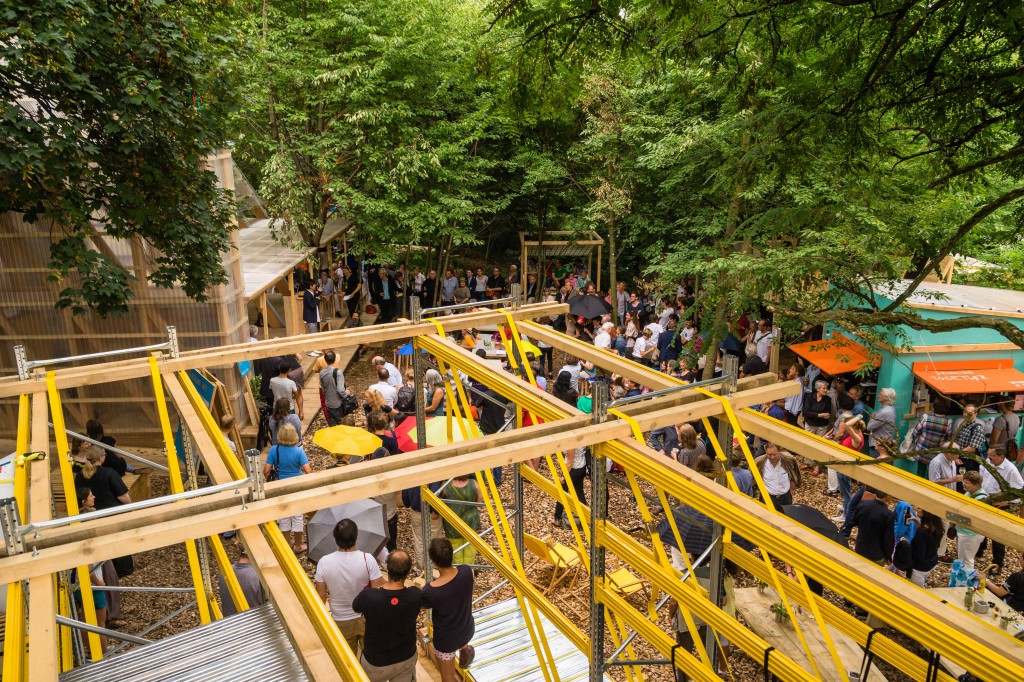 Foto: Kristof Lemp
Foto: Kristof Lemp
THE OSTHANG PROJECT
With the aid of artistic interventions in public space, since 2008 the Darmstadt Summer of Architecture has been initiating a wide range of discourses on urban development in Darmstadt, the Rhein-Main region, and beyond. This year’s Summer of Architecture visits a prominent location, Darmstadt’s Mathildenhöhe, exactly one hundred years after the last Artist Colony exhibition. From 7 July to 15 August, the OSTHANG PROJECT activates the fallow site on the eastern slope of the Mathildenhöhe as a cultural project space.
For five weeks, the aim is to set up a temporary festival campus with discussion fora, concerts, workshops, lectures, lm screenings, think tanks or actions by resident artists. As part of a Summer School, international teams of architects, students of local and external universities, and interested neighbours created a park and temporary buildings to serve as a venue, meeting-place, café, think tank, and accommodation for guests and visitors. Much like the historical Mathildenhöhe artist colony, the OSTHANG PROJECT is an experiment between art, architecture, landscape design, and life practice.
In terms of content, the OSTHANG PROJECT focuses on current questions of architecture, art, design and socio-political discourse. The aim is to arrange cooperations with local and regional partner institutions in order to examine such issues as “the artist colony and artist collectives today”, “art, culture and creative industry as a driving force of urban developments”, “experimental building today and in the past” or “exhibiting as socio-political practice”, and “living together: developing alternative spaces for social action”.
ARTISTS
Garden: atelier le balto (Le Havre/Berlin)
Main Hall: ConstructLab (Paris/Berlin) & Atelier Bow-Wow (Tokio)
Info / Reception: Umschichten (Stuttgart) & m7red (Buenos Aires)
Café / Kitchen: collectif etc (Strasbourg)
Workshop House: Martin Kaltwasser (Berlin)
Sleeping Cabins: orizzontale (Rome)
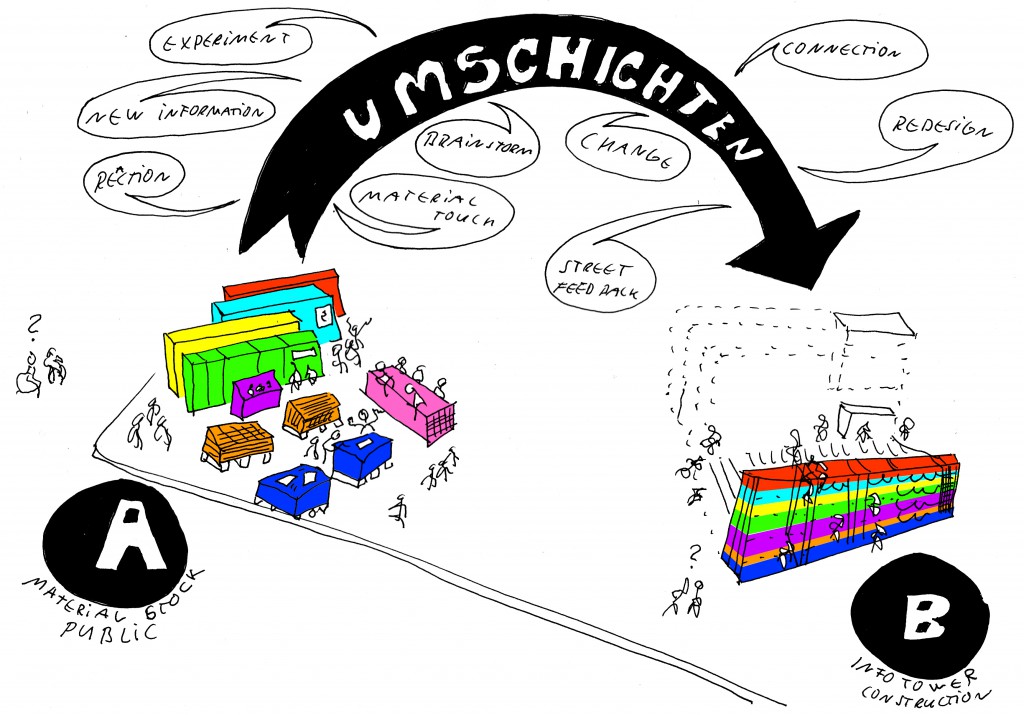
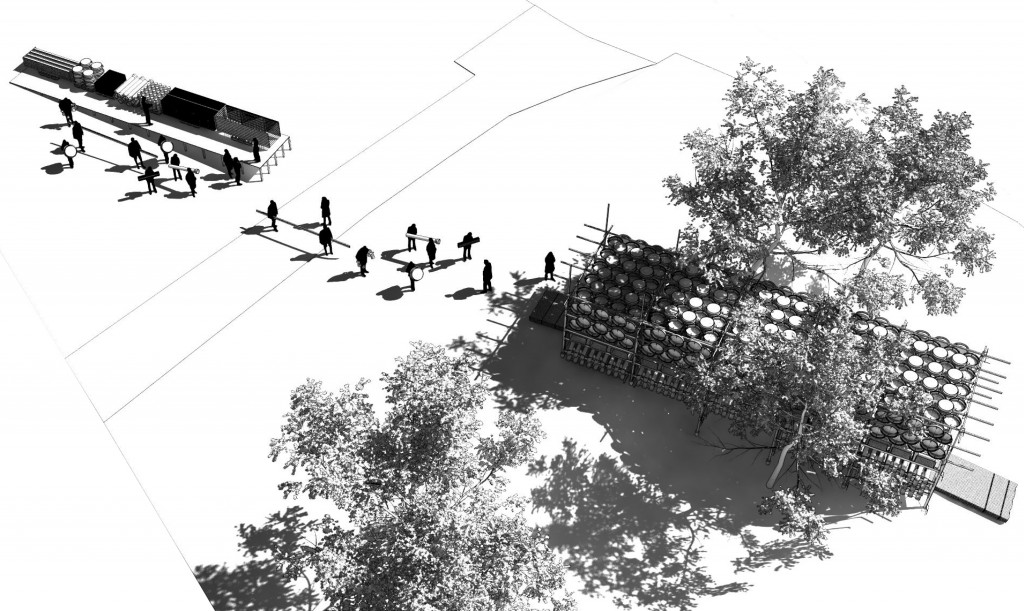
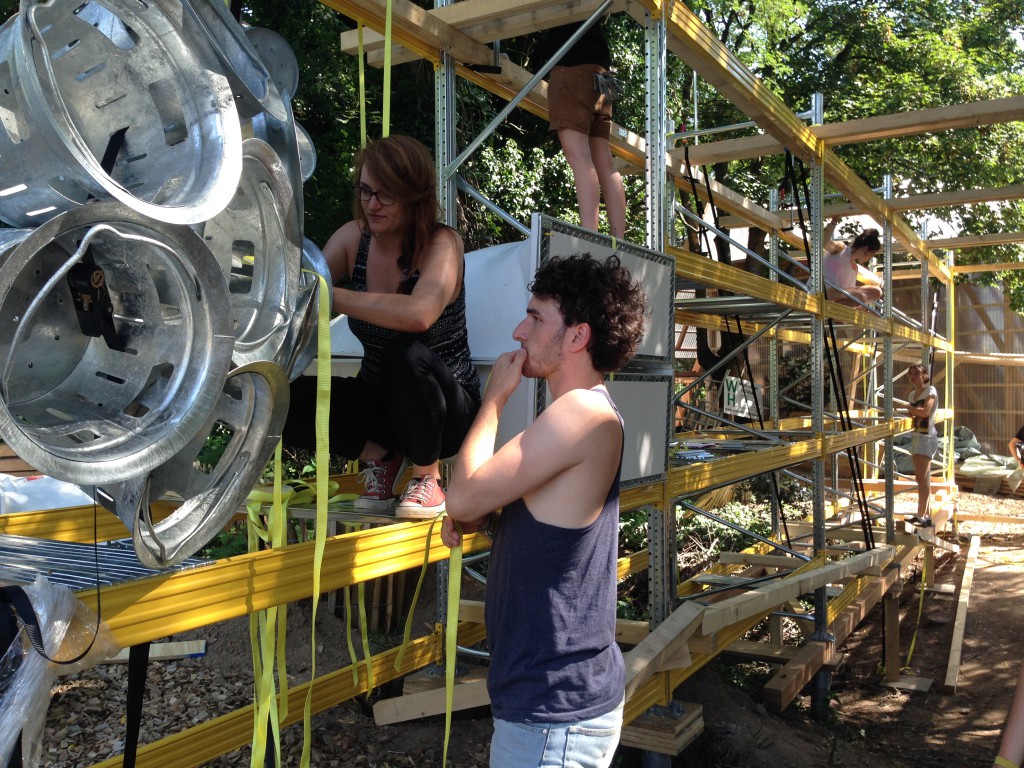
MATERIAL AS A FORUM
Exploring the political considerations of the „design and build movement“ related to the hylomorphic tradition. The hylomorphic tradition that divides between form, as a mental procedure, and „materials“ to be shaped, the old practice of giving form to preexistent materials.
The material flow analysis is a well known tool applied to visualize objects moving along supply chains, their raw material sources, their environmental impacts and their nal disposition. The objects are seen in the framework of a neoclassical development economy. Following material ows as a process of bringing together people and objects, could help us to set up some principles for a further constitution, the tool that enables us to live together. Exploring some principles and proposals for a material constitution by displaying building practices as fuid technologies.
Most of the groups involved in the Osthang project are considering to use recycled materials or directly going into material reclamation: a political practice we have taken as a given that demands to rethink certain economical considerations. The constituency of a „public“ stock of building materials (via negotiation with local facilities- available waste disposal) and the decision making process that people involved will trigger, is an example of these dynamics.
There is an available catalog of facilities in the area that have available material disposals. These are negotiations that are meaningful for the input-output of the region and locates Osthang amidst many other local-global supply chains-disposal circuits. The things developed at the Osthang project will inhabit among these material procedures. How can we map this material assembling as a political forum? There are boundaries unseen in these exchanges? are material networks build up or processes in the way of becoming something different due the circumstances?
We see that material ows and decision making are intertwined. Is this what the Osthang project as a forum is about? Which are the procedures that make us follow these material ows and how we inhabit them together with other species? (is there somebody taking into account the multilayered living beings allocated in the plot?) Material reclamation is a practice well known for all of the groups involved. Is not that buildings are projects that come into a material realm, they are intertwined things that bring together, temporarily, people and objects. They are material ows that are in a constant process of becoming something under uncertain circumstances. How can we think not only of the making of stocks of building materials but of the later disappearing of the buildings or how they would become available for further transformations? How we trace the interlacings of these ows? There are political boundaries in these material practices we are not aware of trespass? Can we map the Osthang project as a forum that brings together material ows and political considerations on living together? We are considering portrait these building practices under two theoretical frameworks about the „commons“, the implicit question in the living together proposal.
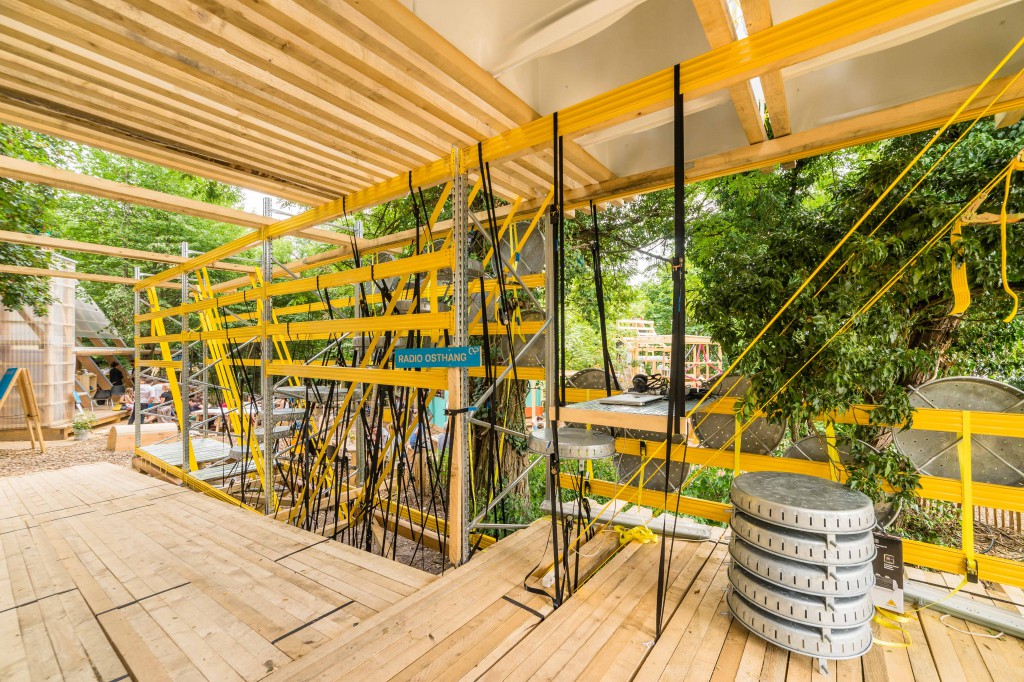 Foto: Kristof Lemp
Foto: Kristof Lemp Foto: Kristof Lemp
Foto: Kristof Lemp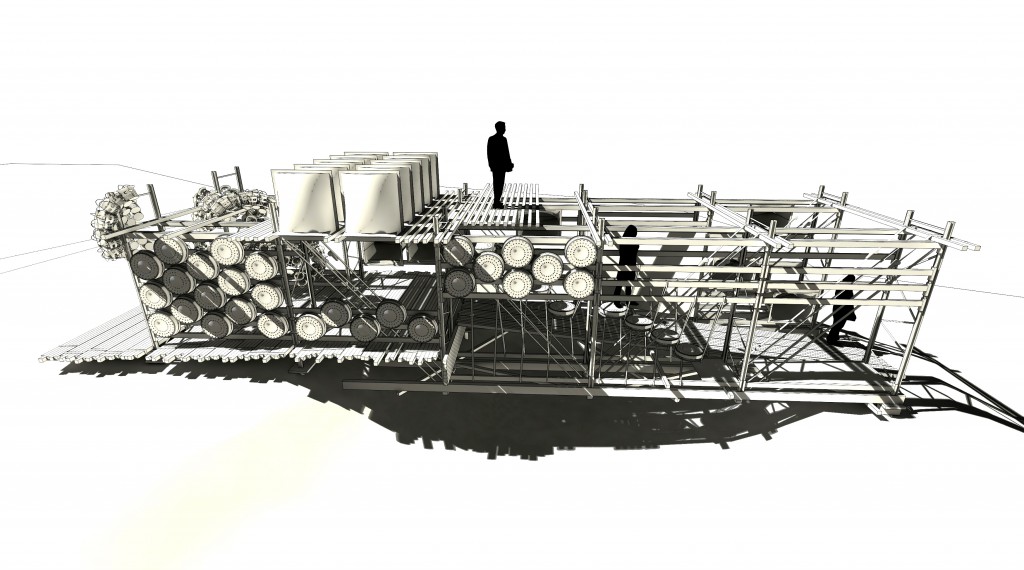
umschichten with Mauricio Corbalan / m7red
Team: Christian Daschek
Titelfoto: Gregor Schuster
Darmstadt 2014